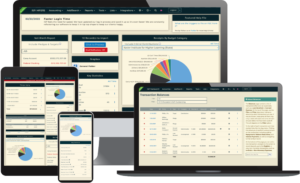If your committee is carrying a credit card balance, it’s important to ensure the data entry is correct. This will save time and trouble when it comes to reporting this information. Typically, Credit Card expenses are considered a type of debt and not a regular expense. However, this may vary per your filing agency.
The simplest way for both data entry and for reporting is to look at each individual month as its own separate debt, or Accrued Expense.
There are a handful of pointers to keep in mind when it comes to credit card accrued expenses.
1. Treat each month that is not paid off in full as a new accrued expense.
2. Payments are standard payments on accrued expenses.
3. Each purchase that makes up the total amount accrued that month should be entered as a split on the accrued expense.
4. Interest charges are just like any other split, but to the credit card company. They will appear on the statement they showed up on and should be reported.
Here’s an example and how all this would apply.
If you accrue a $1000 balance in credit card bills in April and made a $100 payment, that would reduce the April Accrued Expense total down to $900. Then, if another $1000 in credit card bills is accrued in May, you would have two accrued expenses: April’s balance would be $900 and May’s would be $1000. If you paid $200 more off in May, you could apply that payment to one credit card accrued expense or split between both. How, or if it is split, does not matter overall as long as the total payments are correct.
Using the example above, let’s include interest charges. For May, you accrued a $90 interest charge and this shows on your May statement. Given that the $1000 accrued in May includes the $90 interest charge, you would enter the splits as usual, including a $90 split for the interest charge, just as if it was any other expense on the card.






